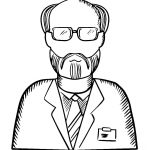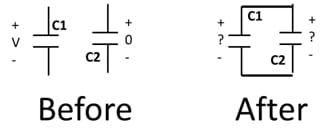
This is Electrical Engineer Muhammad A. and I got a little game for you.
Bored with routine office work? Managing power shut-downs? Purchasing new equipment? Solving labor problems? Meeting equipment commissioning schedules. Here is some refreshing diversion for you.
Solving puzzles is not a hobby limited to children and retired people. Even busy people can enjoy solving puzzles. It stimulates and refreshes your mind, especially when routine business has made you weary.
That is the best time to try solving a puzzle. So, if you are in such a mood, here is a puzzle I vaguely recall from an old edition of Engineering Electromagnetics by Hayt. It used to be an excellent book on electromagnetic fundamentals. Anyway, onto the puzzle, and I will wait for your learned replies.
“Suppose you have an ideal capacitor of capacitance C Farads charged to a voltage of V volts. Let us call this capacitor C1. It would be silly to ask you how much energy it holds. All of us know the basic formula. Obviously, the energy contained in the capacitor is 1/2 CV² Joule. But the puzzle starts now.
Suppose you take another identical and ideal capacitor. Call it C2. Now completely discharge C2 to make sure it has no energy in it. Now you connect this second, discharged capacitor C2 in parallel with the first charged capacitor C1 using zero-ohm connectors.
Use your fundamentals to answer the following questions:
(a) What is the charge on each capacitor?
(b) What is the voltage on each capacitor?
(c) What is the energy in each capacitor?
(d) What is the total energy in the combination?
(e) What was the total energy in the two capacitors before connecting?
(f) Have we lost some energy?
You will certainly determine that the answer to (f) is “yes”. In fact, the total energy in the capacitors at the end of the operation will come out to be just half of the total initial energy. Now here is the puzzle. “Where has half of the energy gone?”
Your guidance is requested as to how and why have we lost this energy? V Volts
Give your answer in the comments below!

Assume initial charge is Q
a. Q/2
b. V/2
c. 1/2*C*(V/2)^2
d. 1/2*C*V^2/2
e. 1/2*C*V^2
f. To move the charges from one cap to other work to be performed. To move Q/2 Coulombs, Q*V/2 Joule energy is required i.e. CV^/2.